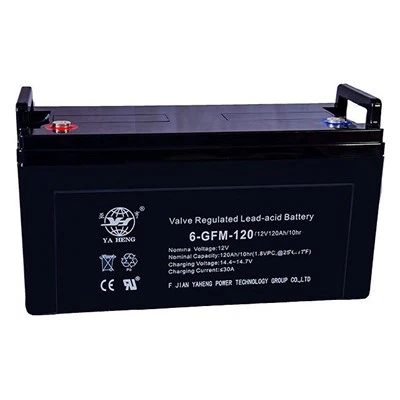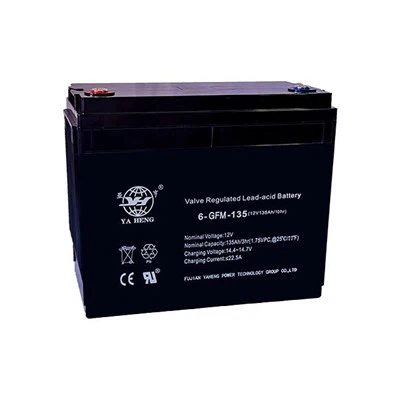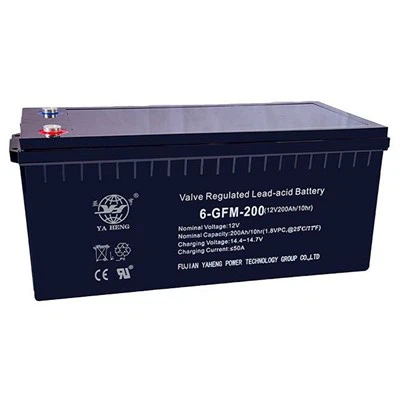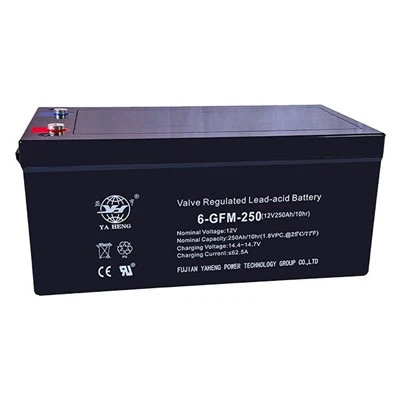Storage Battery
What Is Storage Battery
A storage battery, also known as an accumulator, is a battery that is designed to store electrical energy in chemical form and then convert it back into electrical energy when needed. which are discharged once and then discarded, storage batteries can be supplied with direct current of the correct polarity and recharged to or near their original energy content and power capability, they can repeatedly store electrical energy. These batteries are commonly used in applications where a steady supply of power is needed, such as in backup power systems for homes and businesses, or in vehicles that require a large amount of electricity to start and run.
Benefits of Storage Battery
Reduced energy bills
By storing excess electricity from renewable energy systems, homeowners can reduce their energy bills by drawing from the stored electricity during peak hours.
Power backup
Storage batteries can provide backup power during outages or emergencies. This is particularly important in areas prone to natural disasters.
Reduced carbon footprint
Utilizing renewable energy and storage batteries can significantly reduce a homeowner's carbon footprint, helping to combat climate change.
Improved grid stability
By reducing peak demand on the electrical grid, storage batteries improve the overall stability and reliability of the grid.
-
Camping Power Battery12V100AH Camping Power Battery (6-GFM-100) is a storage battery. The designed capacity is 100AH@Add to Inquiry
-
Camper Power Bank12V120AH Camper Power bank,store energy for RV, camping. The designed capacity is 120AH@ C10Add to Inquiry
-
RV Power12V135AH RV Power battery (6-GFM-135) store energy for RV, camping. The designed capacity is 135AH@Add to Inquiry
-
Camper Power Station12V150AH Camper Power station battery (6-GFM-150) store energy for camper, touring car. TheAdd to Inquiry
-
UPS Power Station12V200AH Storage Battery (6-GFM-200) store energy for UPS, Medical Emergency Power. The designedAdd to Inquiry
-
UPS Power Bank12V250AH Storage Battery (6-GFM-250) store energy for UPS, Medical Emergency Power. The designedAdd to Inquiry
- Tel: +86-760-88625562
- Fax: +86-760-88625562
- Email: johny5@126.com
- Add: No.12 Ave.1 North, Industrial Rd. East, Guzhen, Zhongshan, Guangdong, China
Why Choose Us
Professional team
Our professional team collaborate and communicate effectively with one another, and are committed to delivering high-quality results. They are capable of handling complex challenges and projects that require their specialized expertise and experience.
One stop solution
We can offer a range of services, from consultation and advice to product design and delivery. It is a convenience for the customers, as they can get all the help they need in one place.
Innovation
We are dedicated to improving our systems continually, ensuring that the technology we offer is always cutting edge.
24h online service
We try and respond to all concerns within 24 hours and our teams are always at your disposal in case of any emergencies.
Lead-acid batteries
These are the most common type of storage batteries and are widely used in vehicles as well as in off-grid renewable energy systems. They are inexpensive, reliable, and offer a high energy density.
Lithium-ion batteries
These batteries have gained popularity in recent years due to their high energy density, longer lifespan, and ability to be lightweight and compact. They are commonly used in portable electronic devices, electric vehicles, and renewable energy systems.
Nickel-cadmium batteries
These batteries are widely used in high-demand applications such as aerospace, healthcare, and transportation industries. They have a long life cycle and can tolerate a high number of recharge cycles.
Nickel-metal hydride batteries
These batteries are commonly used in hybrid and electric vehicles, and in rechargeable consumer electronics such as digital cameras and portable music players. They offer high energy density, long lifespan, and are environmentally friendly.

The working principle of battery storage systems involves converting electrical energy into chemical energy, which can be easily stored and converted back into electrical energy when needed. Battery storage systems comprise rechargeable batteries that can store energy from sources such as solar panels, wind turbines, or power grids. Battery storage systems use a series of chemical reactions to store and release energy. When the battery is charged, an electrical current flows through the battery, causing a chemical reaction that stores the energy in the battery. The charged battery then becomes a source of electrical energy when it's required. When the battery discharges, the stored energy is converted back into electrical energy, and the chemical reaction is reversed. The battery storage system consists of several components, including the batteries themselves, a battery management system, and a charge controller. The battery management system monitors the battery's health and performance, ensuring that it's charging and discharging at optimal rates. The charge controller manages the flow of energy to and from the batteries, ensuring that the batteries are charged or discharged at the appropriate levels.
Electrodes
A storage battery contains two electrodes, which are made of different materials and immersed in an electrolyte. The positive electrode (also called the cathode) is usually made of lead peroxide or nickel oxide, while the negative electrode (also called the anode) is typically made of lead or cadmium.
Electrolyte
The electrolyte is a solution that contains ions that facilitate the transfer of electrical charge between the electrodes. It can be an acidic or alkaline solution, depending on the type of battery.
Separator
The separator is a thin, porous material that is placed between the electrodes to prevent them from touching and short-circuiting. It allows the ions to pass through while keeping the electrodes separate.
Container
The container is the outer casing that holds the electrodes, electrolyte, and separator. It is usually made of plastic or metal, depending on the size and type of battery.
Terminals
The terminals are the points on the battery where external circuits can be connected. They are usually located on opposite ends of the battery.

The Application Field of Storage Battery
Consumer electronics
Batteries are widely used in consumer electronics, such as smartphones, laptops, tablets, and digital cameras. These devices require a reliable source of power to function, and batteries provide the perfect solution.
Transportation
Batteries are an essential component of electric vehicles, including cars, buses, and bicycles. They store energy generated by the vehicle's electric motor and provide the power needed to operate the vehicle.
Renewable energy
Batteries are used to store energy generated by renewable sources, such as solar panels and wind turbines. They can be used to provide backup power during times when renewable energy sources are unable to generate enough energy.
Medical equipment
Batteries are used to power medical devices such as hearing aids, pacemakers, and defibrillators. They provide reliable and efficient power for critical medical equipment that saves lives.
Aerospace
Batteries are used in spacecraft and satellites, providing a reliable source of power for critical onboard systems.
Military
Batteries are used to power military equipment such as radios, night vision goggles, and portable computers. They are essential in critical operations where reliable power is essential.
How to Choose a Storage Battery
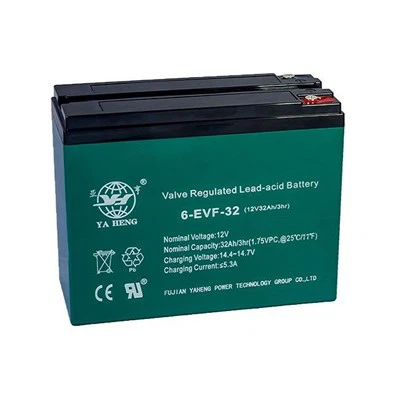
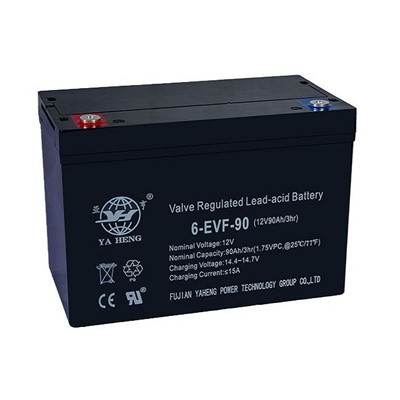
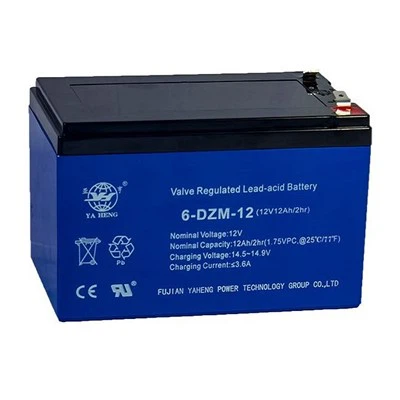
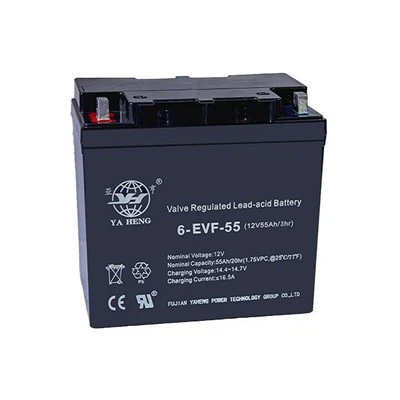
Battery type
There are several types of storage batteries on the market. The most common ones are lead-acid, lithium-ion, and nickel-cadmium batteries. Each type has its own unique features and performance capabilities. Lead-acid batteries are affordable and reliable, while lithium-ion batteries are lightweight and have a longer lifespan. Nickel-cadmium batteries are highly durable but are more expensive.
Battery capacity
Battery capacity is the amount of energy the battery can store. It is measured in ampere-hours (Ah). The higher the battery's capacity, the longer it can run. Make sure to choose a battery with enough capacity to meet your needs.
Charging requirements
Different batteries have different charging requirements. Some require a specific charging voltage and current, while others can be charged with any standard charger. Make sure to choose a battery that is compatible with your charging system.
Durability
The battery's durability is an important factor to consider. It should be able to withstand shock and vibrations. Some batteries are designed to be resistant to extreme temperatures and weather conditions.
Maintenance
Some batteries require regular maintenance, such as adding water or checking the charge level. Others are maintenance-free. Make sure to choose a battery that is compatible with your maintenance routine.
Cost
Battery cost is another important factor to consider. While the initial cost may be higher for some batteries, they may have a longer lifespan which could save you money in the long run.
Storage batteries, also known as rechargeable batteries, are commonly used in various devices like smartphones, laptops, electric vehicles, and backup power systems. The materials used to make a storage battery depend on its type and application.The most common type of battery is the lead-acid battery. It has a lead-based electrode and a sulfuric acid electrolyte. The lead in the electrode is combined with other metals such as antimony and calcium to improve the battery's properties. These batteries are widely used in cars and other vehicles.Another popular type of battery is the lithium-ion battery. It has a lithium-based electrode and an electrolyte made of organic solvents. The lithium in the electrode allows for a higher energy density compared to lead-acid batteries, making them ideal for portable devices like mobile phones and laptops. Other types of batteries are nickel-cadmium, nickel-metal hydride, and sodium-sulfur batteries, each with its own unique combination of materials.

Storage Battery is a key component of ups, and its quality is directly related to the reliability of the whole ups system. No matter how well designed and well-functioning the ups is, it cannot provide uninterrupted power once the Storage Battery fails. Never use cheap, low-quality lead-acid batteries because they are cheap. This will compromise the reliability of all ups systems and cause more damage. The in-line monitoring Storage Battery is the smallest part of the average trouble-free time (mtbf) for all ups software. If you can apply and maintain protection properly, you can increase its lifespan and, conversely, shorten it considerably. Generally can be divided into lead-acid Storage Battery, lead-acid maintenance-free Storage Battery and nickel-cadmium Storage Battery, fully consider the load standard, application natural environment, use time and cost factors, generally choose valve-controlled lead-acid Storage Battery maintenance-free Storage Battery. The main feature of the system is that oxygen is generated on the positive plate when the Storage Battery is charged, which turns into water on the negative plate according to chemical changes. Non-maintenance protection is only compared with ordinary batteries. Pure water or water is added in the whole process of application to adjust the electrolyte level of lithium batteries, which is unavoidable in all maintenance work. In turn, in order to complete the ups continuous power supply system, we need to care and maintain the lead-acid Storage Battery more carefully to maintain the Storage Battery protection.
How to Use a Storage Battery
Choose the right battery for your needs
There are many types and sizes of storage batteries available, so make sure to select one that fits your specific requirements for energy storage.
Connect the battery to a charging source
Most batteries need to be charged periodically to maintain their maximum capacity. You can use a solar panel, wind turbine, generator, or electrical outlet to charge your battery.
Install the battery in a safe and dry location
Make sure the area is well ventilated and the battery is securely placed in a stable position.
Connect the battery to your electrical system
Depending on your setup, you may need to use a converter to change the electrical current from DC (direct current) to AC (alternating current) to power your appliances.
Monitor the battery's charge level
Check the battery's charge level regularly to ensure it has enough capacity to meet your energy needs. You can use a battery monitor or voltmeter to check the voltage and charge level.
Disconnect the battery when not in use
To prolong the lifespan of your storage battery, disconnect it from your electrical system and charging source when not in use.
How to Charge the Storage Battery
Determine the type of battery
Before charging a storage battery, it is important to know what type of battery it is. The three most common types of storage batteries are lead-acid, nickel-cadmium, and lithium-ion.
Prepare the charging equipment
Once you know the type of battery, prepare the charging equipment. Different types of batteries require different charging methods. You may need a charger, power supply, or solar panel.
Connect the charger to the battery
Connect the charger to the battery, following the manufacturer's instructions. Make sure that the polarity of the charger is correct.
Monitor the charging process
As the battery charges, monitor the progress. Many chargers have a display that will show the charging percentage, voltage, and current. It is important to check the battery periodically to ensure that it is not overheating.
Disconnect the charger when finished
Once the battery is fully charged, disconnect the charger from the battery. Do not overcharge the battery, as it can damage the battery and reduce its lifespan.
How to Maintain a Storage Battery
Regularly check the battery's electrolyte level
Electrolyte level refers to the fluid inside the battery that reacts with the electrodes to produce electricity. The level should be checked every six months and topped up if necessary. Maintaining proper water levels is important for the longevity of storage batteries. Check the water levels at least once a month and add distilled water if needed.
Keep the battery clean
Dirt, grease, and other contaminants can slow down the battery's performance. Wipe the battery housing and terminals with a clean, damp cloth periodically. Corrosion around the battery terminals can lead to poor performance and shorten the life of the battery. Clean the terminals using a battery cleaner and a wire brush.
Charge the battery regularly
Do not let the battery discharge completely. Charge it regularly to keep it at a healthy level and prevent sulfation, a process that can permanently damage the battery.Charge the battery regularly and ensure that it doesn't go below a certain level. A battery that remains discharged for long periods will suffer damage and may need to be replaced.
Use distilled water
When topping up the battery's electrolyte level, use only distilled water as tap water contains minerals that can damage the battery.
Store the battery properly
When not in use, store the battery in a cool, dry place away from direct sunlight and extreme temperatures. High temperatures can cause the battery to lose its charge over time, while too much moisture can lead to corrosion around the terminals.
Check the battery's voltage regularly
Using a voltmeter, check the battery's voltage regularly to ensure it is within the manufacturer's recommended range.Inspect the battery regularly for any signs of damage or wear. Check for cracks, bulges, or other signs of damage and replace the battery if necessary.
Certificate



FAQ
We're well-known as one of the leading storage battery manufacturers and suppliers in China. Please feel free to buy high quality storage battery for sale here from our factory. For customized service, contact us now.
solar battery for powering drills, compact standby battery, constant voltage standby battery

